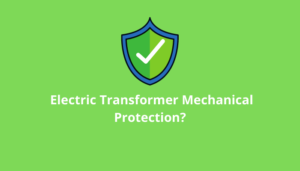Electrical transformers are one of the most important electrical devices in the power system.
They are used in power stations, distribution substations, and the consumer. In this article, I will discuss an important transformer type, hermetically sealed transformers. Let’s get started.
Table of Contents
What is a hermetically sealed transformer?
The hermetically sealed transformer can be described as a transformer without a conservator. The dielectric insulating fluid inside the transformer tank is sealed and completely isolated from the air. This transformer has no breather, silica gel, or a conservator.
This design prevents air from entering the transformer tank, thereby preventing moisture and of course tank parts corrosion.
The oil-immersed transformer is sealed. They are typically constructed using an enclosed tank and fins that permit expansion to allow for transformer temperature variations. The tank’s tightness can be as high as 0.5 Bar.
This kind of transformer is extensively used around the globe. The electrical characteristics remain unaffected, not changed, which will last a longer lifespan for the transformer.
Where are hermetically sealed transformers being used?
These transformers, which are hermetically sealed, are maintenance-free and are specially designed for use in harsh outdoor environments, such as moist or dust-laden atmospheric conditions.
They are widely used in the chemical manufacturing industry and oil and gas terminals, where regular maintenance is difficult. Of course, we have this transformer in my work, it’s an Oil and gas company!
Specifications of the hermetically sealed transformers
- Power Ratings in between 50KVA to 5MVA
- Voltage Class between 1.1KV to 52KV
- It belongs to the material temperature class of “A, F”
- Design for the environmental temperature of -60a to +60
- Winding Material can be aluminum and can be copper
- The types of oils used in hermetically sealed transformers are “ester oil or Mineral, silicone, and vegetable oil”
- A valve to control pressure, a thermometer and the level of the oil inverter, an anti-vibration gadget, and protection boxes are included in hermetically sealed transformers
- Outdoor installation, even in a harsh environment; small size suitable for high voltages; superior resistance to over-voltages in resonance are strengths of hermetically sealed transformers
Hermetically sealed vs conservator-type transformer
| Conservator type transformer | Hermetically sealed |
| Oil properties are affected by moisture, it requires maintenance after a specific time period. | Oil properties are not affected so Its maintenance free transformers. |
| Oil leakage from joints, valves, radiators, conservators, etc. is quite common. | It’s a sealed transformer with having tightness of 0.5 Bar so it has no oil leakage issue at all. |
| These transformers are equipped with a breather they inhale and absorb a certain amount of moisture. | Its design avoids air in the transformer tank thereby avoiding oxidation of the dielectric fluid. |
| As oil comes into direct contact with air, it needs analysis and filtration regularly. | Due to hermetically sealed oil not being in contact with air, that is no need to filter the oil. |
| Use a breather to cool down the transfer when it becomes overheated. | The gas cushion is to compensate for the volume of variation due to heat. |
| Less efficient in Polluted areas. | Best working in Polluted areas. |
| its electrical properties are affected by air, that’s why the life span of this type of transformer is short. | its electrical properties are not altered, ensuring a longer life of the transformer. |
Why don’t we use a conservator in a sealed-type transformer?
A conservator can provide extra space to store the oil when it is heated to a higher temperature.
In addition, conservators have breathers for air to flow in and out when temperatures fluctuate due to load variation.
When a transformer is sealed type, the oil cannot flow over. In sealed transformers, additional space for oil is maintained inside the tank that is used for the main supply—that’s why a Conservator is not necessary.
Simply, hermetically sealed transformers do not need a conservator.
advantages and disadvantages
Advantages:
Of course, if this transformer has no advantages other than its maintenance-free transformer, it’s enough for it as an advantage. But, it has much more!
- Low losses as compared to conservator-type transformers.
- Low Noise as compared to conservator-type transformers.
- High Efficiency as compared to conservator-type transformers.
- Achieve an energy-efficient impact and also reduce the impact of air pollution.
- It is fully enclosed in comparison with normal transformers that use oil.
- It eliminates the storage tank for oil.
- A Corrugated Tank elastic chip altered the oil volume to adjust automatically.
- The transformer is isolated from the air to slow and prevent the degradation of insulation and the loss of oil.
- Improve the reliability of the operation.
Disadvantages:
The only disadvantage that is most commonly encountered in a hermetically sealed transformer is the following:
Most hermetic transformer tank typically has no pressure relief. This device can expand or become fatter than its normal size because of the gases in the tank if there’s an ongoing arcing.
When there’s an arcing within the tube, it releases gases of some sort, and since there is no pressure relief device, the gases trapped aren’t able to escape, which can cause damage to the structure of the tank.
Is the hermetically sealed explosion-proof?
Yes, hermetically sealed transformers are explosion-proof and are suitable for work in hazardous locations due to the use of Gas Cushion Phenomena.
When a transformer has an overload or a short circuit it can cause overheating and explosion. Due to overheating transformer oil volume increased, to solve this problem, Gas Cushion phenomena is used.
The gas cushion is separated from transformer oil by membranes, which means transformer oil has a gas layer on the upper side of the oil tank; normally, nitrogen gas is used in gas cushion because nitrogen gas has properties as a cooling agent, and it’s also non-flammable gas, so the gas cushion is used to compensate the volume variation due to heat in hermetically sealed transformers.
Do hermetically sealed transformers have Buchholz relays?
No, hermetically sealed transformers do have not a Buchholz relay, because in this type of transformer, additional space for oil is maintained inside the tank, and the Buchholz relay serves as a protection device affixed to (some) power transformers.
It is equipped with an overhead reservoir for an oil called “conservator “so it’s clear Buchholz relay is used with a conservator type transformer, not a hermetically sealed transformer.
Why do we use nitrogen gas in a hermetically sealed transformer?
The gas Nitrogen can be described as an inert one used for cooling purposes and oil protection from environmental conditions.
The tops of transformers contain Nitrogen. As the transformer temperature increases, the volume of transformer oil grows and is filled with a small amount of Nitrogen to ensure that the gas is compressed and conservators are removed.
Some reasons to use nitrogen:
- It has a strong dielectric potency, around 2 to 3 times the air potency.
- It’s colorless in appearance, smells odorless, and is a non-toxic gas.
- The thermal conductivity can be between 2 and 3 times more than air and better transfer heat capability.
- It is superior in cooling properties of air.
The gas cushion usually compressed nitrogen or dry air, is kept over the liquid in the transformer oil tank. Thus, electricity properties in the insulation liquids aren’t affected by additional aging influences, which ensures the longevity of the transformer.
Don’t Leave Empty-Handed!
Install my Free Android App on Google Play:
Electrical Cables Most Common Tables “Cables Tables”
And, my Electrical Calculations App “Fast Electrical Calculator”
Discover more great content by subscribing to My channel
Looking to stay ahead of the game in the world of electrical engineering? Subscribe to my YouTube channel and gain access to exclusive content you won’t find anywhere else!
The staff I recommend
(Amazon Affiliate Links to products I believe are high quality):
- Economy 120 Volt/60Hz AC Power Source – Step-Down Voltage & Frequency Converters 1800W
- UNI-T Digital Multimeter Tester UT139C
- 50-Amp Extension Cord for RV “100ft”
- Voltage Stabilizer 110/220v
- Hair Dryer “best selling“
- TOSHIBA EM131A5C-BS Countertop Microwave Ovens
Disclaimer: This contains affiliate links to Amazon products. I may earn a commission for purchases made through these links.


